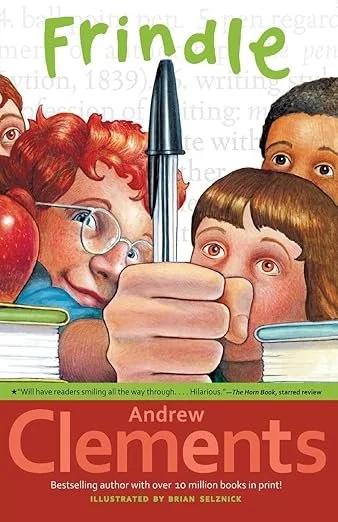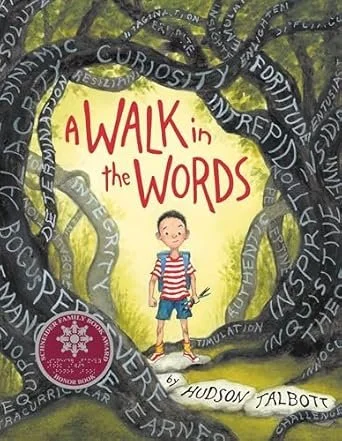Introducing Word JOY!— Content and Resources for Intermediate Readers Grades 3-6
We are so excited to launch a brand new section of JOYcabulary providing tools, tips, and resources tailored specifically to the needs of intermediate readers in grades 3-6.
As I attend conferences and webinars with teachers across the country, I keep hearing the same concern over and over: students’ limited vocabulary is having a negative impact on their reading comprehension, on the ability to orally express their thoughts, and on the level of their word choice when writing. Why is this such a consistent lament?
Certainly we can point to digital distractions: cell phones, social media, and video games. With more time being spent on devices, students are just reading less - especially for pleasure outside the school day. According to Vox’s Anna North, in 1954, 35% of 13 year olds reported reading for fun almost every day. By 2023, that number was down to 14% and 31% said they never read for fun at all.
Certainly the pandemic has had a negative effect, but access to books is decreasing as well. Books are being banned. Local bookstores are shuttering their doors. Public libraries are curtailing hours due to budget cuts. Even within the school day, students are reading less. Now they often spend large chunks of time on word level skills and are only being offered excerpts from their core reading programs.
Whatever the cause, our children are missing out on important benefits of reading: learning new vocabulary and building background knowledge. They are even losing the stamina it takes to read a whole book! In her article in The Atlantic “The Elite College Students Who Can’t Read Books,” Rose Horowitch cites a Columbia University student who claimed that, in high school, she had never been required to read an entire book - only excerpts, poetry, and news articles. She was now having difficulty keeping up with the reading demands of her college courses.
Wide and deep reading is an important component of Michael Graves’ acclaimed 4-Part Vocabulary Program, outlined in his text, The Vocabulary Book. But another critical component of this program design is developing word consciousness: the interest in and curiosity about words. Even with students who DO enjoy reading, I often find them skipping over words they do not know, thus having a devastating effect on their word acquisition and comprehension. We need to explicitly teach our students to pause and ponder when they meet new words in texts - to pause when they come to a word that is new to them and then ponder its meaning via the many strategies we teach.
How do you instill word consciousness in older students who have developed this word-skipping habit? One way is with launch books. A launch book is simply an engaging book in which the characters focus on word learning as part of the plot, or where interesting words are a central element. When read together, students can learn new words along with the character and model his or her interest in learning new words. These books are a simple way to begin a focus on the JOY and power of learning new words. (We’ll explore other methods in later posts.)
Here are just a few launch books intermediate readers may enjoy as a class read aloud or an independent read:
Frindle by Andrew Clements
In this oldie-but-goodie, Nick learns how words are created. As a joke, he renames a pen frindle. Soon the word is spreading across the country, and there’s nothing Nick can do about it. With our kids creating new words every day (rizz, sus, lit), this one may still bring a chuckle. It might even be an inspiration for studying etymology - the study of the origin and evolution of words.
Calvin Gets the Last Word by Margo Sorenson
Calvin carries his personal dictionary, determined to find the perfect word to describe his annoying brother.
I recently shared this book to launch a vocabulary journey with a group of 4th graders. Even though it is a picture book, they loved it! We captured all of Calvin’s words to find opportunities for their use across the day. They enjoyed comparing Calvin’s definitions with real dictionary definitions. Some students even decided to create their own personal dictionaries… just like Calvin. (SEE ALSO: our FREE lesson plan for Calvin Gets the Last Word.)
Love in the Library by Maggie Tokuda-Hall
After the bombing of Pearl Harbor, Tama is sent to live in a War Relocation Center in the desert. Trying not to think about the life she once had, she works in the camp’s tiny library. She searches for words to describe her situation… and the library’s best customer, George.
A Walk in the Words by Hudson Talbott
When Hudson Talbott was a little boy, he loved drawing. It came naturally to him, but reading was another story. He felt alone, lost, and afraid in a world of too many words. His love of stories wouldn’t let him give up. Fortunately, he gave himself permission to read at his own pace, becoming the storyteller he is today.
The Swifts: A Dictionary of Scoundrels by Beth Lincoln
On the day they are born, every Swift child is brought before the sacred Family Dictionary. They are given a name and a definition - a definition it is assumed they will grow up to match. Suspenseful and packed with games, word play, and lots of mischief.
A longer read for sure and more advanced (maybe for 10+), but I like that there is a sequel for students to read on their own (The Swifts: A Gallery of Rogues). If reading aloud, you’ll need to carefully plan your pacing.
Please note: While not gruesome, there is some violence and murder. There is also an adult who is trans and a child who is non-binary.
Once Upon a Tim by Stuart Gibbs
My current favorite:
Tim, a peasant boy, goes on a quest to become a knight. Fast paced and funny, with a little potty humor thrown in, this could be a perfect choice to begin your word learning journey. Gibbs inserts an I.Q. Booster arrow whenever he uses an interesting word. He then immediately supplies a student-friendly definition and uses it in a sentence.
I love the play on words in the title. The entire book could be read aloud in under two weeks. The best part is that it is the first book of a series. Once finished, your students could opt to independently continue the journey with the other titles.
Don’t forget: older kiddos still love picture books, so be sure to check out other launch books.








